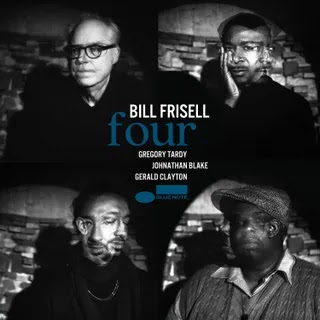The debut from the English bandleader and producer is a fascinating blend of spiritual jazz and brass band that can sound full-on psychedelic while staying grounded in its clever arrangements.
In a world of musical utility, it is incredibly satisfying to come across an album as supremely impractical as Yellow, the full-length debut from English bandleader and producer Emma-Jean Thackray. It’s so deliciously circuitous that it develops its own gravitational pull. The album takes inspiration from a number of modish sources, including Flying Lotus’ wonky beat sorcery, the mystic jazz of Alice Coltrane, Roy Ayers’ sunshine-soaked funk, and Sun Ra’s cosmic overload. At times, the result is not that far from Kendrick’s towering To Pimp a Butterfly or the jazzier shade of Tyler, the Creator, as witnessed on Flower Boy.
But Yellow splits off into its own lane thanks in part to Thackray’s overarching lysergic bliss. She says she approached the record “by trying to simulate a life-changing psychedelic experience,” which explains a lot: Yellow is fascinating and profoundly befuddling, a voyage deep into nowhere in particular. Just when you think you’ve got your bearings—when you’ve got “Sun” pegged as a kind of disco number, for example—Thackray throws in an impetuous chord progression or rhythmical stutter to pull the ground from under your feet.
The album’s other distinguishing characteristic comes in its use of low-end brass and, in particular, the liberal employment of the sousaphone. Its sonorous parp comes across like a trad jazz send-up of modern producers’ obsession with electronic sub-bass. As a teenager in Yorkshire, Thackray was the principal trumpeter in her local brass band, a musical tradition often associated with the North of England. The use of brass here, with the sousaphone joined by the trombone, trumpet, and saxophone, seems to call back to that era, giving her cosmic jazz a fascinating Northern English (and New Orleans) tint. Thackray has previously wondered whether “some Yorkshire white girl” should participate in the Black American musical tradition of jazz. This, perhaps, is her answer, with the tremble of brass making Yellow something more than a straight copy of someone else’s musical innovation.
Thackray clearly has a devilish skill in composition and arrangement. Fabulous vocal melodies anchor this album, from the lilting command to “stick out your tongue” on “Say Something” to “Golden Green”’s languorous ode to weed. It is a measure of Thackray’s skill as an arranger and bandleader that a song like “Third Eye” manages to sound both epic and concise, with a soaring string arrangement, jubilant vocal choir, and a melody that leaps around like a licked frog—all dispatched in three exhilarating minutes, an abundance of ideas used very nimbly. It’s a testament to the vision that Thackary puts into every moment of her debut: Few people would dream up an album as endearingly obtuse and gleefully dysfunctional as Yellow, let alone have the skill to realize it.
















0 comments:
Post a Comment